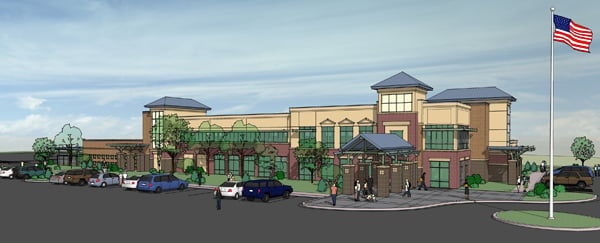
Where do I start? What are the first steps? What information do I need to provide? These are some of the most frequently asked questions that we, as architects, get from prospective clients. And they are good questions! The design process can be very confusing and overwhelming, so here are a few tips to help you get started.

As you start thinking about a site or location for your new facility, be sure to do your homework. Check that the site is zoned properly for your use. Make sure your site is large enough to accommodate both the size of the building you want AND the required amount of parking. Look into local code and regulation compliance requirements. Investigate the size and capacity of the utilities that currently serve the site. It is important to know all of these things about a site or a new building before you buy or sign a lease, because they can all be difficult and/or expensive to overcome later in the process.

If you are purchasing an existing building, building out a lease space, or expanding/renovating your existing facility, it helps to gather as much information as you can about the existing building. A set of blueprints is ideal. Oftentimes, original plans for a building are rolled up and tucked away in a utility closet or storage room. If you can’t find them, you can always check with the local building department to see what they have on record. Or you can ask the building department for the name of the original architect and try to track down drawings from them directly. It is not absolutely necessary to have a copy of the previous building plans, but if you do, it can help to speed up the design process.

Knowing what you can afford and how much you will be able to borrow will help define the size and parameters of your project in the beginning stages of the design process. As a general rule of thumb, you can typically borrow your annual gross. However, getting some advice from your bank early in the process can prevent designing a new facility that you love, only to find out you can’t afford to build it.

If you have gathered the above information and still aren’t quite sure if your project makes the most financial and logistical sense, let your architect help. Your architect can do a feasibility study that will look at all the information you have gathered, combine it with their design and construction expertise, and use that information to help you decide whether or not to move forward.

You don’t have to have it all figured out, but having a general idea of what you would like in your new building will help drive the design in the right direction from the beginning. Talk to colleagues who have recently remodeled or built a new facility, and ask them what works well and what doesn’t. Visit as many animal care facilities as possible, especially new ones, and take note of what design elements, spaces, materials, and finishes appeal to you. And finally, think through your day-to-day operations to decide if any of your current spaces are under-utilized, too large, too small, or if you need a space that you don’t have at all. The more thought you put into these things ahead of time, the easier it will be for your architect to help you create your ideal design.

